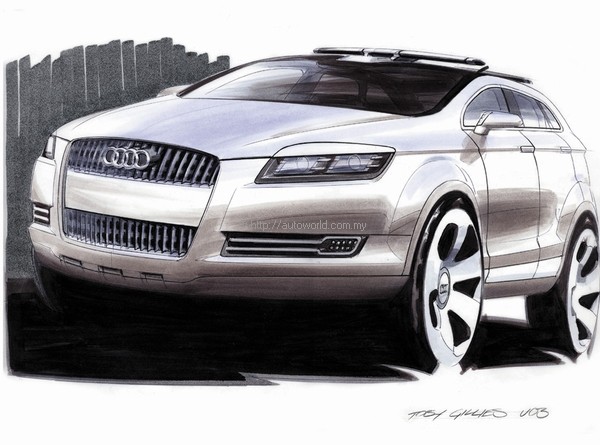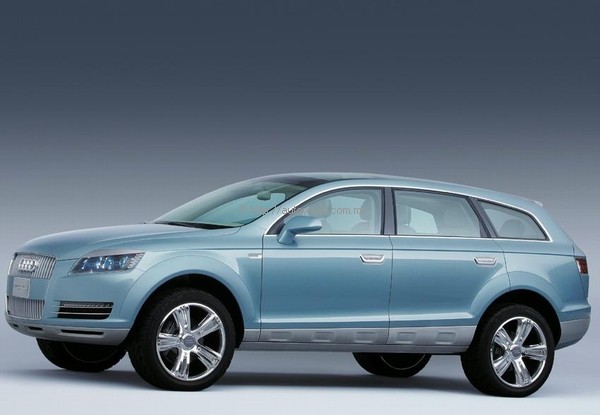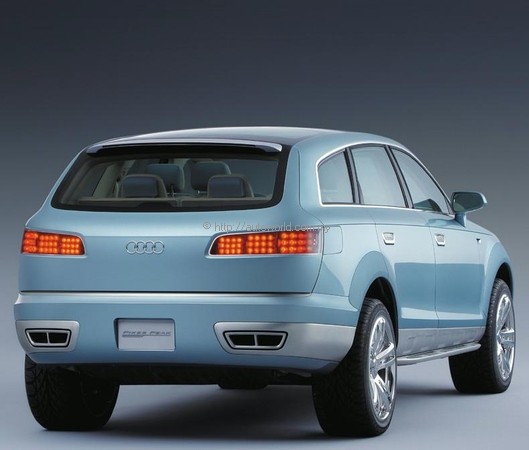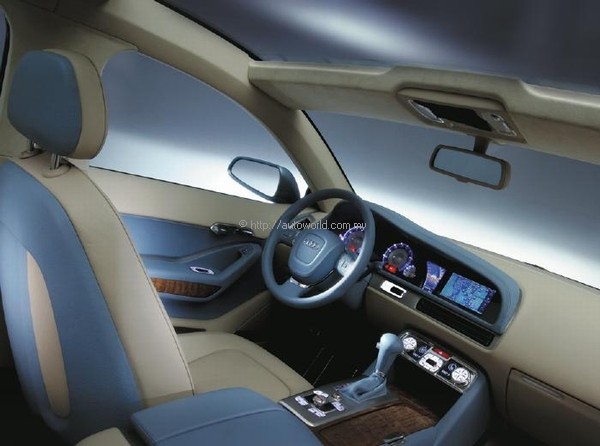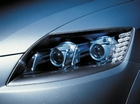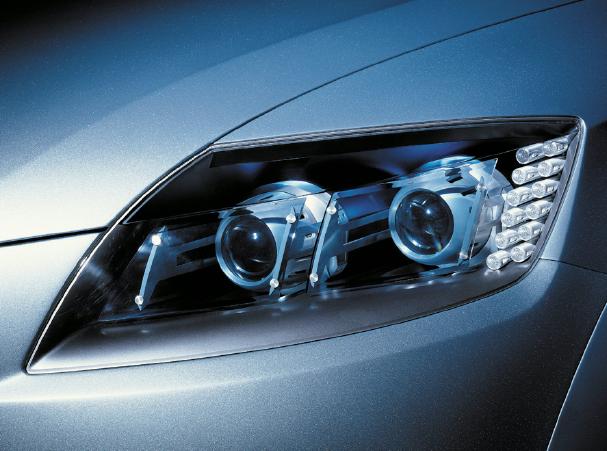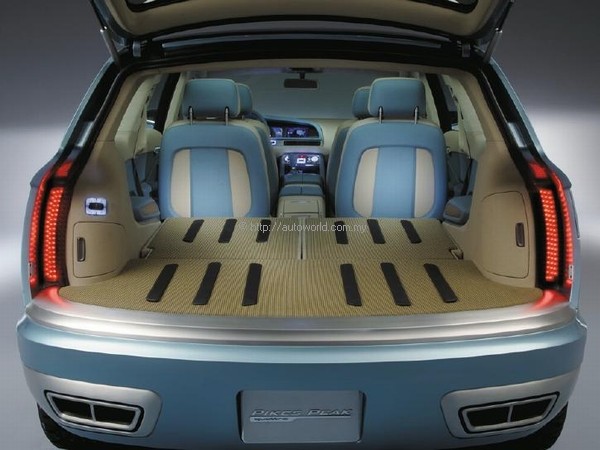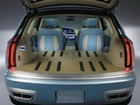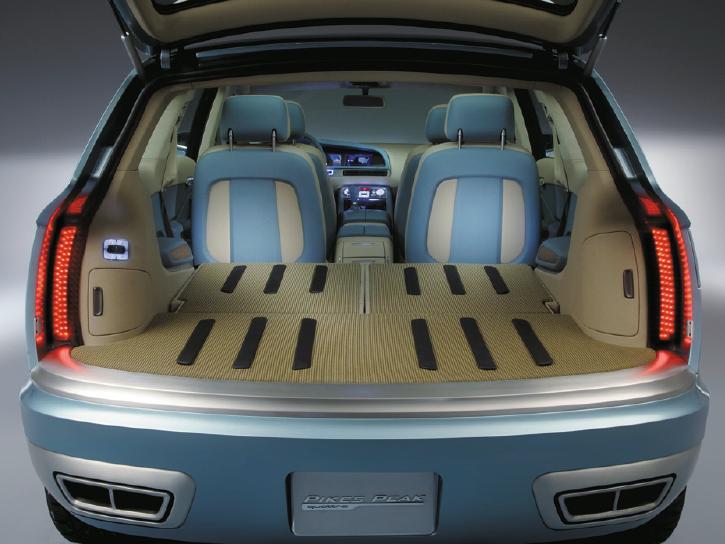Audi Pikes Peak Quattro Concept
Pikes Peak is a famous mountain in the USA; once each year, up to 160 fearless drivers race up this 4300-metre peak in a bid to be the fastest to the top. The route is almost 21 kms long with straights on which 200 km/h can be reached… but there are also 156 corners with loose stone surfaces… and no barriers at the sides!
Among the varied cars used in the annual “Race to the Clouds” have been some very special Audis entered by the German automaker’s sports division. Three victories have made the Pikes Peak International Hill Climb Race part of the successful history of Audi Motorsport. In 1985, it was won by Michèle Mouton, the first woman driver ever to win a WRC. A year later, the legendary American race driver Bobby Unser proved to be unbeatable, and in 1987, Walter Röhrl in the Audi Sport quattro S1 scored a much-admired overall victory by taking just 10 minutes 47.85 seconds.
It is therefore in honour of such achievements that Audi has called its latest sport concept study – developed exclusively for the 2003 North American International Auto Show in Detroit which is on this week – the ‘Pikes Peak Quattro’.
 |
The qualities possessed by the Pikes Peak quattro exhibit definite parallels with the world of rallying, that high-speed sport mostly conducted on loose-surfaced roads and tracks. However, the Pikes Peak quattro for 2003 is said to be ‘considerably more versatile’ than the Audi Sport quattro that was so successful 15 years ago.
The 4-door 4+2 hatchback is a draft design that indicates the systematic evolutionary path that current Audi design could take: it combines the sheer power of the legendary Audi quattro and an advanced design concept that brings together elements from widely varying types of automobile.
Many of the visible details of the Pikes Peak quattro are striking. The Xenon Plus headlamps behind clear glass covers communicate the technical aspect of their design, and supply a magnificent spread of light for fast driving on the highway or to find a way along loose-surfaced tracks after dark. The use of LEDs as a light source permits the fog lamps to be extremely compact and permits boldly styled rear lights to be used.
The loop-pattern door handles only extend when the advanced key function’s proximity sensor has detected that and authorized key holder wishes to enter the car; door handle lights then come on too. This remarkable approach to car access combines the visual elegance of flush-mounted door handles with the substantial feel of those with a loop for the driver or passenger to grasp.
The outside mirrors are also used to illuminate the area close to the vehicle. A camera has been built into the mirror at the right, and focused on the right front wheel. This ‘dead area’ (for LHD cars) is then displayed on the Audi-MMI (Multi Media Interface) screen so that the driver can judge the clearance or the distance from the edge of the road more effectively when crossing difficult terrain.
Evidence of the dynamic properties of the Audi Pikes Peak quattro is provided by the massive wheels with 5-arm double spokes (from the outside, these have the appearance of two star-pattern wheels one behind the other) and the tyres with a specially-developed tread pattern.
PAX wheels of size 295/770 R 560 A (equivalent to a visible wheel diameter of 523 mm) help to keep the vehicle controllable if there is a sudden loss of tyre pressure. Their ‘run-flat’ construction means that mobility is maintained if a tyre failure should occur, and the vehicle can be driven for up to 200 kms at speeds up to 80 km/h.
The harmony of the overall concept adopted for the interior creates strong links with the sporty, emotive exterior styling. With fine materials and flawless workmanship, the interior provides a new and most agreeable travel experience. Matt-brushed aluminium and Japanese “Tamo” ashwood trim elements give it sporty and technical, but also natural, welcoming accents. A glass roof offers the occupants a panoramic view and a sense of space and light.
The clear outlines featured in the driver’s area are emphasised by a raised centre console that adds to the dignified, sporty impression created by the entire interior. A novel type of display using 3D laser optics makes the instruments brilliantly legible even when vision is otherwise poor.
The multi-functional leather-covered sport steering wheel is of 3-spoke design, with tiptronic transmission shift paddles behind it. The driver can select the chosen gear without having to take a hand off the steering wheel.
For optimized occupant protection, two neatly housed additional “out of position” cameras identify the front passenger’s seated position and modify triggering of the airbag appropriately.
The gear shift gate and the Audi-MMI unit are located conveniently and ergonomically for the driver. By dividing up the centre console asymmetrically in this way, space is created on the front passenger’s side for a convenience package comprising two cupholders and a shelf for small items. There is a cold-store compartment under the split armrest. All the centrally located controls have polished aluminum surrounds and clear-glass covers to add visual impact to the interior.
The front centre console is arranged like a bridge from the fascia to the rear end of the front seats. Between the individual second-row seats there is a second, retractable centre console that emphasizes the functional character of the Audi Pikes Peak quattro. It contains controls for the infotainment electronics and another cold-store compartment, shelf space and cupholders.
Six people can travel in the Pikes Peak quattro on three pairs of leather-upholstered seats. The decision to adopt a 4+2 seating layout emphasizes the concept study’s premium character, with no cramped centre seat accommodation above the prop shaft tunnel, but instead a well-balanced blend of luxury and functional efficiency.
All seats in the have a wide range of electrical adjustment. To simplify access to the rear seats, those in the second row have an easy-entry function. If bulky loads have to be carried, the two rear pairs of seats can be folded down so that their backs extend the load area up to a capacity of 1,950 litres when needed. The rear seat is also folded electrically.
The MMI display is not available only to the front seat occupants. Two 6.8 x 5.1 inch screens fold down from a console in the roof lining to provide both information and entertainment for those sitting in the second and third rows. DVD and MD drivers in the retractable centre console, a separate MMI with Internet access and USB and headphone plug connections are provided so that the passengers have access to a varied selection of entertainment facilities.
For easy loading, the tailgate extends into the rear side panels; it is opened and closed electrically by remote control. Hand baggage can be placed in the load area through the rear window, which opens separately.
The V8 twin-turbo engine (well known in the RS 6) has been further developed and now has a power output of 368 kW/500 bhp. A decisive factor in this power hike is the advanced FSI direct-injection principle which indicated that new standards were about to be set when it was used on the competition cars that scored historic victories in the 2001 and 2002 Le Mans 24-Hour races and in the American Le Mans Series. Powerful FSI engines are already in production for the Audi A2 and A4 models.
In the Pikes Peak Quattro, the FSI engine is notable for its free revving and vigorous pulling power at all engine speeds. It accelerates the car from 0 to 100 km/h in just 5.0 seconds and takes it on to a governed top speed of 250 km/h. Its maximum torque of 630 Nm is available from as low an engine speed as 2000 rpm upwards and remains constant over a broad speed range.
It was only logical for Audi engineers, when conceiving this versatile concept vehicle, to include all its in-depth quattro driveline know-how and its experience with variable-height active air suspension. The brief was for the Pikes Peak quattro to be able to tackle loose surfaces and poor roads just as supremely as fast sections of the highway.
In all driving situations and across all kinds of surface, quattro permanent all-wheel drive stands for optimum traction and dynamic stability. The standard torque split between the axles is 50% to the front and 50% to the rear, but if wheelspin occurs at either axle the split is diverted to the axle with more grip.
The electronic differential lock controls torque distribution between the two wheels on an axle. Then there is the Electronic Stabilization Program, which assists the driver when potentially critical driving situations close to the handling limit have to be mastered. Like all Audi quattro cars, the Pikes Peak quattro provides the best possible traction on all surfaces and in all conditions.
Variable-height pneumatic control at both axles responds automatically when the load carried by the vehicle increases, and restores its ride height to the standard level. The air springs support the entire load at each axle.
The lane departure warning system is a special function that actively supports the driver. By means of an optical sensor, this driver assistance system scans the road markings and issues an acoustic warning signal and a physical response in the form of steering wheel vibration if the driver departs from his or her chosen lane. A warning that an unintentional lane change is taking place is then given to the driver as a means of avoiding a possible accident.
Also installed on the Pikes Peak Quattro is adaptive cruise control, which not only performs the functions of a conventional cruise control system but also maintains the desired distance from the vehicle in front automatically.
A special feature is its variable-height adaptive air suspension. This Audi system makes the Pikes Peak quattro into a most impressive all-rounder. Ample ground clearance – up to 280 mm for crossing rough terrain – can be preselected at the MMI; at high speeds, the body can be lowered so that its centre of gravity is lower and its aerodynamics are optimized. As road speed increases, the suspension is lowered and the shock absorber settings varied automatically, so that optimum dynamic stability is assured.
The concept chosen for the Pikes Peak quattro unites the most varied demands that can be made of an automobile: it is a sedan with abundant sporty style, suitable for serious travel purposes, it is powerful off-road transport and it is a stimulating leisure vehicle with a versatile interior layout for passengers and loads.
The Pikes Peak quattro shows that the existing definition of the SUV (Sport Utility Vehicle) must be modified, and new values added, in Audis’ view. It extends the activity component in this definition to include such typical Audi attributes as the quattro driveline with variable-height adaptive air suspension, and matches the dynamic road performance of many a high-class sports car.




